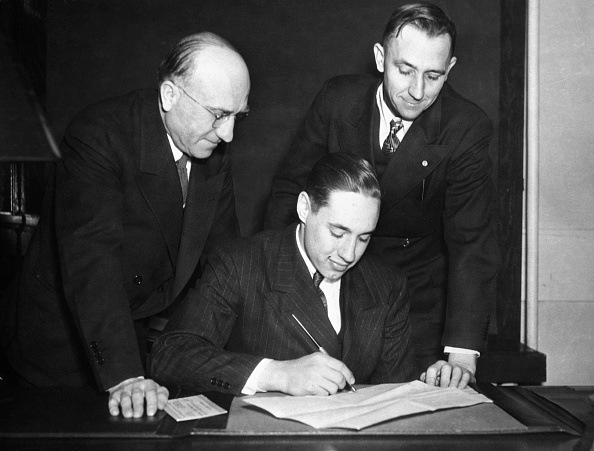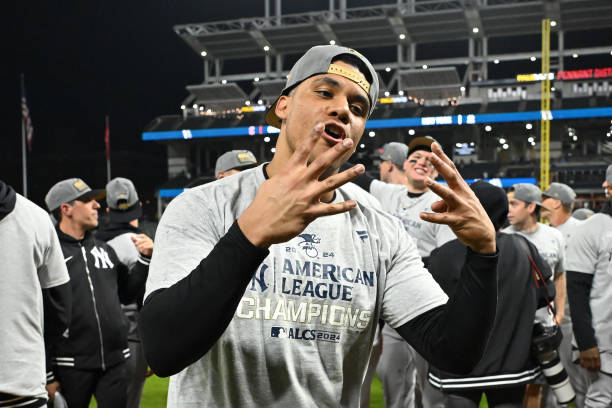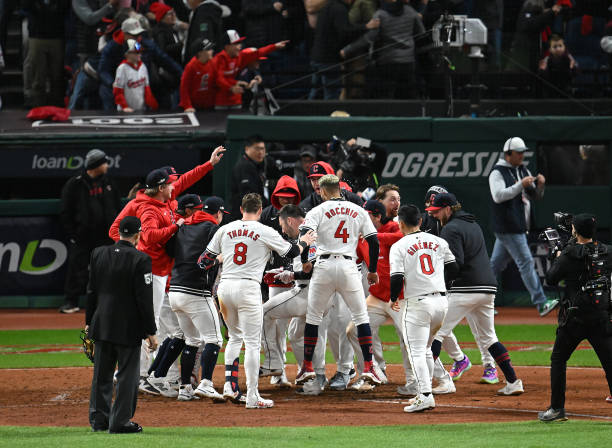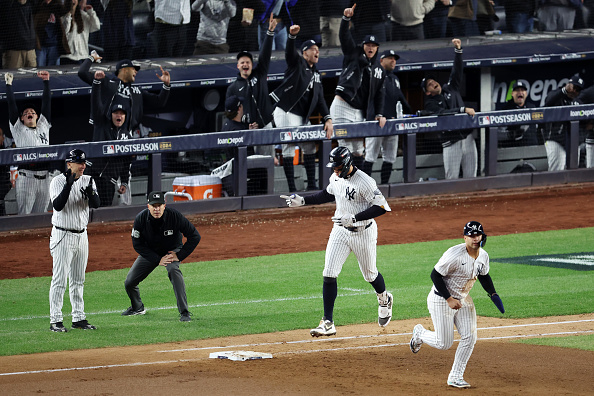Cy Slapnicka, Cleveland’s other great Cy, never threw a pitch or got a hit for the team but is in the Cleveland Guardians Hall of Fame.
Without him, Baseball Hall of Famers Bob Feller, Bob Lemon, Earl Averill, and Lou Boudreau as well as all-stars Mel Harder, Herb Score, Roger Maris, and many more would not have worn a Cleveland uniform. Slapnicka signed them all to contracts.
Embed from Getty Images
“He knew what he was doing all right,” said Slapnicka’s most famous find, Feller, at age 91 in 2010 when his former mentor was inducted.
“Of course, he kind of found me by accident, I think. He came to see a right-hander by the name of Claude Passeau, who was pitching for Des Moines that night. Somebody told him about me and I threw for him in the morning. He never did see Passeau.”
Passeau went 20-11 for Des Moines in 1935 at age 26, signed with the Pittsburgh Pirates, and had a 162-150 record for three National League teams through 1947.
Slapnicka wasn’t sorry he passed on Passeau for the fabulous Feller, however.
Two Iowa Farmboys
Embed from Getty Images
“I liked Cy right from the start,” Feller said. “He grew up on an Iowa farm, just like me. He knew baseball, knew pitching, and helped me with a lot of things in my life.”
Cyril Charles Slapnicka was born in 1886, four years before the legendary Cy Young began his career in Cleveland. After six years in the minors, he was called up by the Chicago Cubs in 1911 after going 26-7 that summer for Rockford (Ill.). He went 0-2 and was sent back down for seven more years. Slapnicka won 25 games at Double-A Milwaukee in 1913 but didn’t get back to the majors until age 32 with Pittsburgh in 1918. The right-hander went 1-4 for a big-league career record of 1-6 and only 13 strikeouts in 73 1/3 innings.
Slapnicka also dabbled in show business. Billed as “Slappie,” he performed as a juggler, using his athleticism to toss and twirl tables, chairs, cigar boxes and other unusually sized items. At one time, the Milwaukee club sought an injunction to keep him off the stage, fearing an injury.
Feller was born Nov. 3, 1918 – four months after Slapnicka’s only big-league win, a glorious complete game over the New York Giants on July 5. Sixteen years later, the two met at Feller’s farmhouse in Van Meter, Iowa – shortly before Slapnicka was named general manager in Cleveland.
Feller dazzled him with his fastball. Slapnicka in turn enticed the rugged farm boy to sign by offering him a baseball signed by the entire Cleveland team – and one dollar.
Babe and Lou
Embed from Getty Images
“I have no idea what became of that baseball, but at the time it was pretty special to a kid like me,” Feller said. “The only ball I have at my museum is one signed by Babe Ruth that he gave me when I was a kid. He was on a barnstorming tour – The Bustin’ Babes against the Larrapin’ Lous. Ruth and Lou Gehrig coming to town was big news.”
Feller coming to Cleveland was special, too – and controversial. A few years before he died in 1979 at age 93, Slapnicka told the story to Russ Schneider, then the long-time baseball beat writer at The Plain Dealer.
“I had heard about this kid pitcher living not too far from my home and went over to see him,” Schneider quotes Slapnicka in his book, The Cleveland Indians Encyclopedia. “I watched a couple pitches from the first-base line and got the feeling this was something extra. So I moved behind the backstop and sat on an automobile bumper for six innings. It must have been uncomfortable, but I never noticed. All I knew was this was a kid pitcher I had to get. He was something special. His fastball was fast and fuzzy; it didn’t go in a straight line; it wiggled and shot around. I didn’t know then that he was smart and had the heart of a lion, but I knew I was looking at an arm the likes of which you see only once in a lifetime.”
Slapnicka saw it again when he went to Florida to scout and sign three kids – catcher Dick Brown, his shortstop brother Larry Brown and a gangly left-hander whose fastball was nearly as dazzling as that fired by Feller. That was Herb Score.
Sign on a Napkin
Decades earlier, Slapnicka simply could not contain his hyperbole over Feller.
“Gentlemen, I have found the greatest young pitcher I ever saw,” he told team directors at a meeting back in Cleveland. “I suppose this sounds like the same old stuff, but this boy will be one of the greatest pitchers the world has ever known.”
Slapnicka just had to have Feller for the Indians – although it meant breaking the rules to get him.
Feller signed the back of a napkin, dated July 22, 1935. Slapnicka listed the team as Cleveland’s farm club at Fargo-Moorhead (N.D.). The agreement read: “The Fargo club agrees to allow Robt. Feller to visit his folks at any time during the 1936 season, also to invite Robt. Feller’s folks to visit him at Fargo during the summer of 1936 at the expense of the Fargo baseball club. The Fargo club has no objection to Robt. Feller playing basketball at any time. For a consideration of one dollar paid to Robt. Feller, this agreement is declared valid.”
Said Feller: “I was still in high school and wanted to play for the basketball team, so we put that in there.”
Bullet Bob
Slapnicka then transferred the “contract” to New Orleans and then to Cleveland without the teenager having to report to either team.
“I came to Cleveland after high school let out in 1936 and worked out with the Indians,” Feller recalled. “I pitched for the Cleveland Rosenblums, which was the top amateur team in the area. Then I worked three innings against the St. Louis Cardinals and did pretty good.”
Pretty good? He struck out eight, including Leo Durocher twice and all-stars Pepper Martin and Ripper Collins in that game on July 6.
Feller made his big-league debut in relief on July 19 at Washington. He got his first career win on Aug. 23 against the St. Louis Browns – striking out 15. That was only two shy of Dizzy Dean’s then-MLB record in the 4-1 win. His name and picture graced newspapers and magazines all across America.
Breaking the Rules
Embed from Getty Images
Three days earlier, Commissioner Kenesaw Mountain Landis began investigating Feller’s signing. Lee Keyser, owner of the Des Moines team in the Western League, wanted Feller. He protested that Cleveland had broken baseball’s rule of signing schoolboys to major-league contracts. Landis made it thunderingly clear he did not believe Slapnicka, considered the signed napkin “a coverup” and fined the club $7,500. He asked Feller if he wanted to become a free agent.
“Slapnicka broke the rules,” Feller said. “But my dad wanted me to pitch for Cleveland. So did I. I told the commissioner I wanted to stay and he let me do it. It was a good decision.”
Embed from Getty Images
Slapnicka similarly signed first baseman Tommy Henrich. Given the same options by the commissioner, Henrich chose to sign with the New York Yankees. He hit .282 with 183 homers and 795 RBI through 1950.
“Slappie” later slapped the rules to get Boudreau, a two-sport star at the University of Illinois. Boudreau turned down a minor-league deal from the Cubs because he wanted to stay in school. He refuted Slapnicka too. The shrewd GM gave Boudreau’s father some money, believing this would not alter the young shortstop’s amateur status. Boudreau’s stepfather, unhappy he didn’t get a cent, told the Big Ten. Lou had his athletic scholarship voided.
Slapnicka wrote to the NCAA, saying it was his fault and not Boudreau’s, but the damage had been done. Boudreau signed with Cleveland while continuing to attend college in the fall and winter to get his degree.
What Might Have Been
In 1936, Slapnicka signed speedy Oklahoma outfielder Hugh Alexander. There were no contract shenanigans. The youngster had defeated the legendary (Cleveland native) Jesse Owens in high school track meets. Then he put up outrageous numbers in two years in the minors. In his first year, he batted .348 with 28 homers and 102 RBI. Promoted a level, Alexander hit .344 with 27 homers and 88 RBI in only 79 games to earn a call to Cleveland.
In his first game, Alexander got his only career hit off Chicago White Sox lefty Thornton Lee, a single. He went 1-for-11 for the season. Tragedy struck during the off-season when he lost a hand in an oil rig accident. Slapnicka immediately hired Alexander at age 20 as the youngest scout in baseball history.
His first signing was Allie Reynolds. The big-right-hander went 181-107 over 13 seasons (1942-54) for Cleveland and the Yankees. Alexander later scouted for the White Sox, Los Angeles Dodgers, Philadelphia Phillies, and Cubs in a 60-year career. He signed several stars including Dale Mitchell, Frank Howard, Davey Lopes, Steve Garvey, and Hall of Fame pitcher Don Sutton.
Knowing the Score
Embed from Getty Images
Slapnicka resigned as Cleveland’s general manager in 1941 and became a scout for the Browns, then the Cubs. He scouted for Cleveland from 1946 until 1960.
By the time he signed Score in 1952, Slapnicka had gained some finesse. Since Score was underage, it was illegal to talk directly to him about signing. So Slapnicka would take the family to dinner and address Score’s dad. He talked about how well Cleveland management treated the pitchers they had: future Hall of Famers Feller, Lemon, Early Wynn, and all-star Mike Garcia.
Said Score years later: “I listened to every word he said. When the man who signed Bob Feller is talking, you pay attention.”
Though he signed slugger Hal Trosky, batting champion Bobby Avila, all-stars Ken Keltner, Jim Hegan, and Jeff Heath, and others – Slapnicka lamented “those that got away.”
“I had a chance to sign (Hall of Famer) Lefty Gomez and didn’t think he was good enough,” he said in the 1960s. “I thought I had (Hall of Famer) Hal Newhouser, but got there about 10 minutes late. We were going to give him a couple thousand dollars and a new car. The Tigers signed him for 400 bucks. You can’t win ‘em all.”
More Cleveland Guardians Articles
More General Baseball Articles
More MLB Articles
Main Photo:
Embed from Getty Images
- Categories
-
Cleveland Guardians
General Baseball





